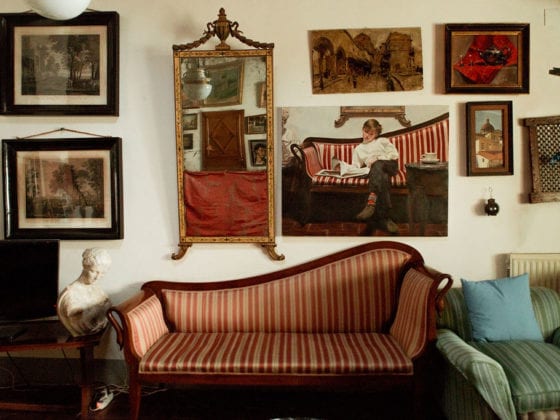I cannot talk about setting boundaries without talking about the seven years that I lived in Mexico. Before I lived in Mexico, I was a socially anxious college student who had no problem saying no to social events, weekend trips or anything that pushed me outside of my usual circle of friends, studying and what my job required of me.
I constructed boundaries in every area of my life under the guise that they kept my already fragile mental health from becoming more fragile. Perhaps boundaries did protect me, but looking back, I built too many.
Perhaps boundaries did protect me, but looking back, I built too many.
I moved to Mexico two years after I graduated from college. With time, my social anxiety decreased, but I was unprepared for a culture that was so, well, open.
Mexico is the land of neighbors popping in unannounced, of birthday party invitations that list a start time but omit an end time, of friends coming over for dinner and then staying until midnight. There is a word for “boundaries” in Spanish: límites. However, rarely did I hear anyone mention, much less practice it.
About 20 to 25 family units comprised the Mexican neighborhood where I lived. With the exception of my family and one other family, all of those family units were related to one another. It took me years to learn who lived in what house because large groups of my neighbors were always together—sitting in front yards, on patios and in rocking chairs in the shaded courtyard of the biggest house.
There is a word for “boundaries” in Spanish: límites. However, rarely did I hear anyone mention, much less practice it.
My neighbors were some of the happiest people I have ever met. I wanted to become more like them but also knew that keeping some boundaries would be key. Here are three ways that I learned to set boundaries while still engaging in community:
I guarded my afternoons.
After my daughter was born and I began staying home with her, the mornings were when I felt most energetic. So I began inviting my elderly neighbor over for breakfast and coffee, and I would listen to her tell me stories about her childhood. I never made plans in the afternoon because that is when my daughter took a nap. While she slept, I read, wrote or cleaned the house.
In the early evenings, refreshed from my alone time, I would take my daughter for a walk around the neighborhood. When we walked past the shaded courtyard of the biggest house, sometimes we stepped inside the gate to sit in one of the rocking chairs, too. Sometimes, we visited my elderly neighbor. We sat in her kitchen while she made tortillas, before walking home to eat dinner and start my daughter’s bedtime routine.
I prioritized social events.
Have you ever been invited to two birthday parties, a baptism and a baby shower in a single weekend? This was a regular occurrence in Mexico. I learned to prioritize which events to attend by first looking at who was inviting me. Was it a close friend or only an acquaintance? The level of relational equity determined how much time and energy I was willing to spend on a gathering.
The level of relational equity determined how much time and energy I was willing to spend on a gathering.
Then, I would look at what time the events started and prioritize the ones earlier in the day. If I did decide to go to a social event at night after already going to one (or multiple events) earlier in the day, I would only stay for an hour or two before heading home to decompress with a book.
I slept.
Like many people, but especially as an introvert living in a foreign country, I needed a lot of sleep at night to function optimally. When I started inviting neighbors and friends to visit, I would suggest that they come in the late afternoon. Sometimes, they would end up staying until midnight, but I would make sure that the next morning, I didn’t have to be anywhere early and could ease my way into the day (preferably with a cup of coffee and plate of chilaquiles).
When I shifted my boundaries to adapt to Mexico, I felt more alive and connected to my neighbors and their culture. I felt, paradoxically, that who I was—American, independent and still socially reserved—became more clearly defined. I like who I became once I started setting healthy boundaries: a person focused on wholeness, community and love.
What are some boundaries you have for your own peace of mind? How do you enforce them?
Image via Frank Terry, Darling Issue No. 13











